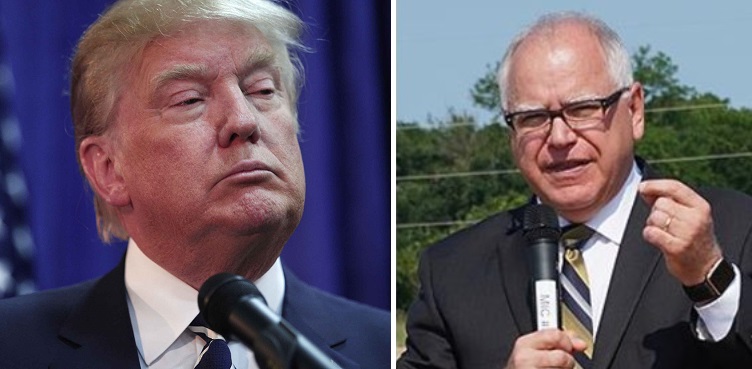Earlier this month, Minnesota Gov. Tim Walz sent a letter to President Trump asking for money to pay for all the damage incurred by the George Floyd riots that Republicans say he and other Democrat officials in the state had allowed to happen.
On Saturday, a spokesperson for Walz’s office confirmed that the request has been denied.
“The governor is disappointed that the federal government declined his request for financial support. As we navigate one of the most difficult periods in our state’s history, we look for support from our federal government to help us through,” the spokesperson reportedly said.
“Nearly 1,500 businesses in the Twin Cities were damaged by vandalism, fire, or looting. The heaviest damage occurred along major corridors of commerce and public accommodation, including Lake Street in Minneapolis and in the Midway Area of Saint Paul,” he wrote.
“These corridors provide lifeline services like food, pharmaceuticals, health care, housing, and transportation to thousands of Minnesotans. Refined estimates of property damage are now upwards of $500,000,000, making this the second most destructive incident of civil unrest in United States history after the 1992 Los Angeles riots.”
While Walz continued by pointing out how he’d “ordered the full activation of the Minnesota National Guard,” he neglected to mention that this order came on May. 30, days after the riots had begun, and a day after the president had tweeted this:
Trump’s administration response to Walz this came a day after Minnesota Rep. Tom Emmer, a Republican, submitted his own letter to Trump urging him to launch an investigation into the state’s response to the riots.
“To date, there has been no federal analysis of the actions that were — or were not — taken by local and state officials to prevent one of the most destructive episodes of civil unrest in our nation’s history,” he wrote.
“Various news reports point to inexperience, miscommunication, and perfect storm of no-win scenarios as the culprit that allowed these events to spiral out of control. Absent a full and complete investigation accompanied by recommendations on how to appropriately respond, similar events are bound to occur in the future.”
He added in a statement that given the “federal rights investigation into the circumstances surrounding” Floyd’s death, it’s only fair to perform a similar investigation into the riots that resulted because of his death.
Following the riots in May, Walz laid some of the blame on local officials like groveling Minneapolis Mayor Jacob Frey. Some felt the governor had a point.
“We all value our First Amendment right to protest, and rational people can certainly differentiate between genuine peaceful protestors and bad actors looking to take advantage of chaotic situations, but apparently Mayor Frey didn’t trust law enforcement to be able to make those distinctions when he instructed the police to treat the protests with a gentle hand,” local radio host Drew Lee wrote in an op-ed.
“It became abundantly clear by Wednesday night that there were scores of people who weren’t interested in fighting for justice for George Floyd but rather seemed intent on causing destruction and mayhem for reasons that are difficult to comprehend. Mayor Frey had a choice to make at that moment – enforce the laws while making every effort to protect the real protestors, or become an enabler to the destruction of his city.”
But others noted that, while local officials were certainly also to blame, so was Walz.
Like Minnesota Senate Majority Leader Paul Gazelka wrote, “That leadership rests on Gov Walz’ shoulders. Walz cannot blame mayors of MPLS and St. Paul, they can take some responsibility, but it ultimately comes down to him.”
So the question remains whether the leaders who share responsibility for what happened deserve to have their self-made problems fixed by the feds. And well, the president has clearly given his answer.











